How to treat cabbage from midges?
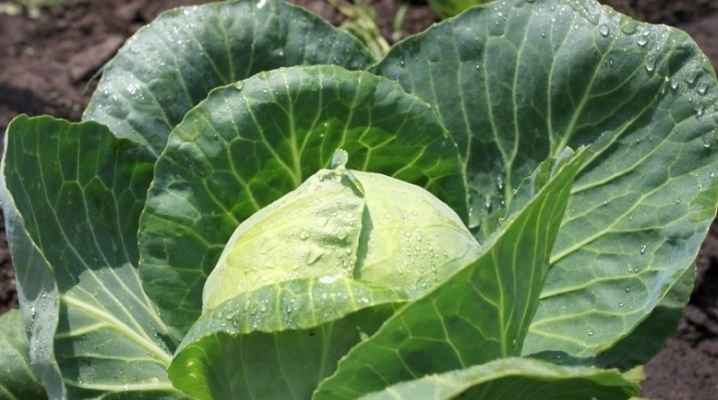
Every gardener is familiar with the problem of pests on cabbage seedlings. In order to cope with such a nuisance in time, you need to act clearly and quickly. The article will tell you about what pests are on cabbage and how to recognize signs of damage. Also, from it, the reader learns about effective methods of dealing with midges - both chemicals and folk remedies.
Description of pests
Most often, pests attack cabbage as soon as it is planted in open ground or in an active growth stage. They look like this: small black midges with elongated hind legs, which allow them to jump quickly and high.
Because of this feature, and also because the favorite delicacy of this small insect is cruciferous vegetables (radish, horseradish, broccoli, kohlrabi, Brussels sprouts, etc.), the pest is called cruciferous flea.
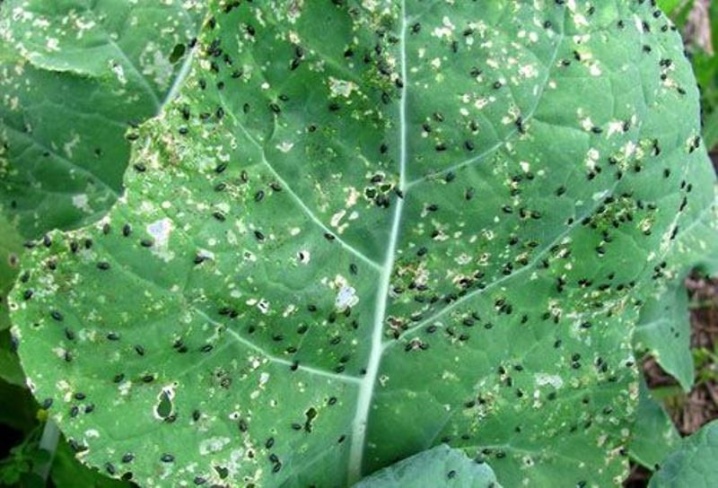
In addition to the fact that the parasite causes significant harm to the vegetable, it is quite difficult to get rid of it. The fact is that this insect spends winter in the upper layers of the soil, covered with fallen leaves or withered grass, and the next season it again attacks cabbage beds. Such pests feed on the soft foliage of a vegetable (adults) or its root system (larvae).
A characteristic trace of the vital activity of the cruciferous flea is the white tunnels, which it gnaws inside the cabbage leaves.
It is worth noting that the above-described insect is not the only pest that can settle on cabbage. It can also be parasitized by slugs, aphids, cabbage butterflies and cabbage root lurkers.
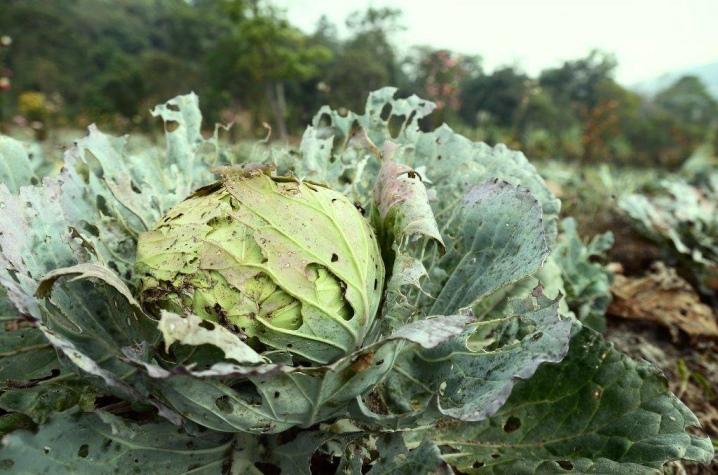
Causes and signs of defeat
The main thing that needs to be done in the process of pest control is to notice the signs of their appearance in time and not to waste time for active action. Any delay can lead to the fact that cabbage flies completely destroy the entire crop and parasitize for more than one season.
There can be several reasons for the appearance of pests:
- insufficient watering of cabbage;
- excessive moisture in the soil where the seedlings are planted;
- close location with a bed of heaps of garbage and pits with compost.
The main sign that cruciferous fleas have appeared on the vegetable is the formation of small holes on the cabbage leaves. At the same time, the leaves themselves look faded and dry. The plant affected by the midge quickly withers, as the surface area that is involved in photosynthesis, which is necessary for the development of the root crop, is reduced. At the same time, the root system itself does not suffer particularly strongly, since the small insect larvae cannot cause significant harm to the plant.
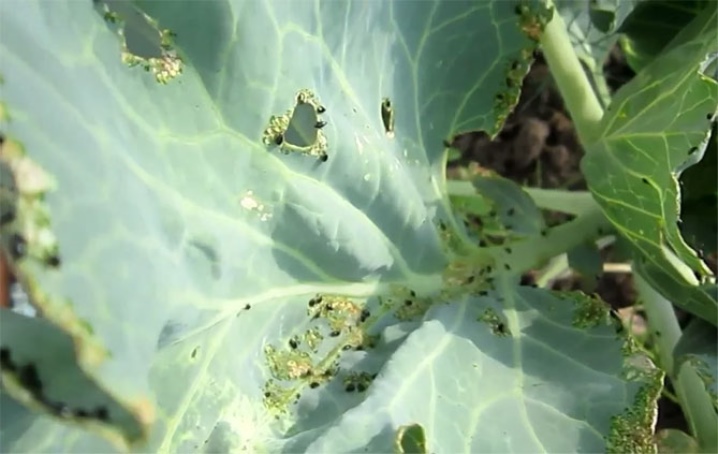
As a rule, after an attack by midges, young cabbage is attacked by other pests and often begins to get sick. This is because a weakened plant becomes more susceptible to external negative factors.
How to spray?
As soon as the first traces are found that the cruciferous flea has settled in the garden and is already eating the vegetable, you should immediately begin to fight it. Until the midge has finally eaten the entire plantation, you need to poison it.
The greatest damage to cabbage is caused by an adult who eats only the pulp of the plant, the most effective method of combating the pest is to treat the leaves with chemicals. You can also sprinkle with products made according to folk recipes. It is necessary to spray not only the affected area, but also the entire plant, since the cruciferous flea can easily jump to an untouched place and begin to parasitize on it.
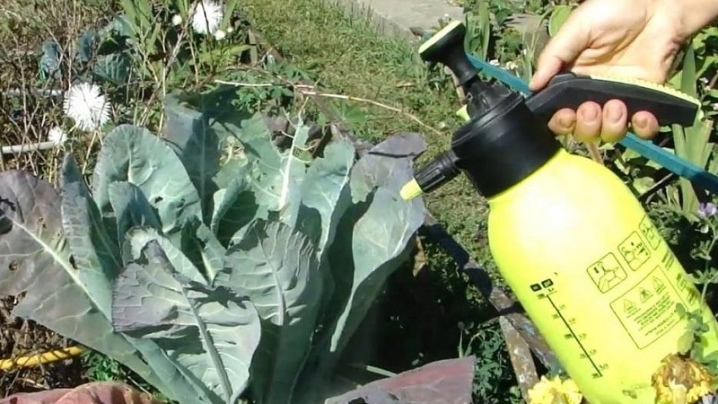
To get rid of the larvae, it is necessary to act on the root of the vegetable - pour it with a special substance or sprinkle it with a chemical on the soil in which the culture grows. Any of the above methods will help the gardener save the seedlings and bring out the uninvited guest. However, when the case has already started, and a large number of pests have accumulated on one vegetable, you cannot do without the use of chemicals.
This must be done quickly, because if you do not process the cabbage from midges in time, there is a high probability that the pest will return next year. Whichever method is chosen, it must be remembered that weeds are the carrier of harmful insects. Special attention should be paid to their timely removal from the beds.
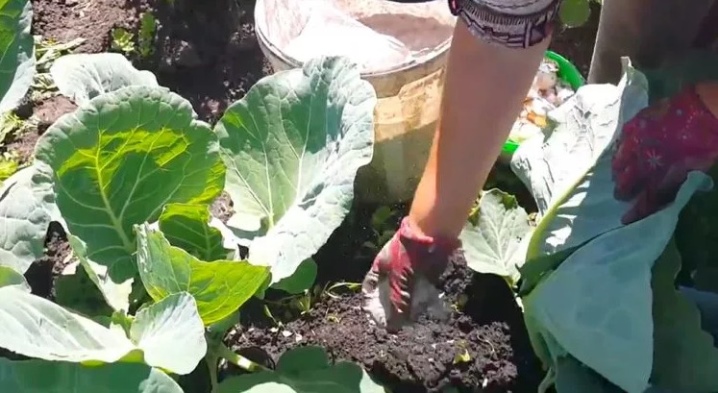
Chemicals
There are currently many effective chemicals available to help combat cruciferous flea beetles. Among them are the following.
- "Lightning". Used for spraying. It is the most effective and budgetary drug for the destruction of all types of garden pests. It must be used carefully, observing all protective measures. In case of contact with skin or mucous membranes, the product can cause severe burns and tissue damage.

- Actellik. Before use, it should be diluted in water and then sprayed on the plant. It can be used not only to control insects, but also to prevent their appearance. It helps well to get rid of midges even in the most advanced cases. Even in case of accidental ingestion into the human body, "Actellik" will not cause serious side effects, however, safety measures should not be neglected.
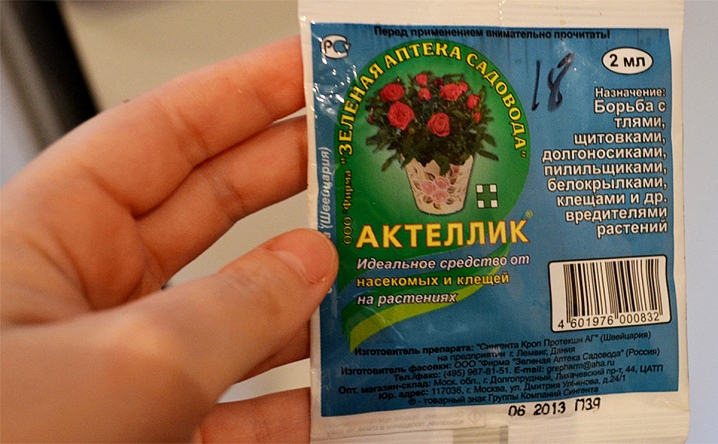
- "Initiative". An effective preparation for the control of cruciferous flea larvae. It is used before planting seedlings in open ground, mixed with soil.
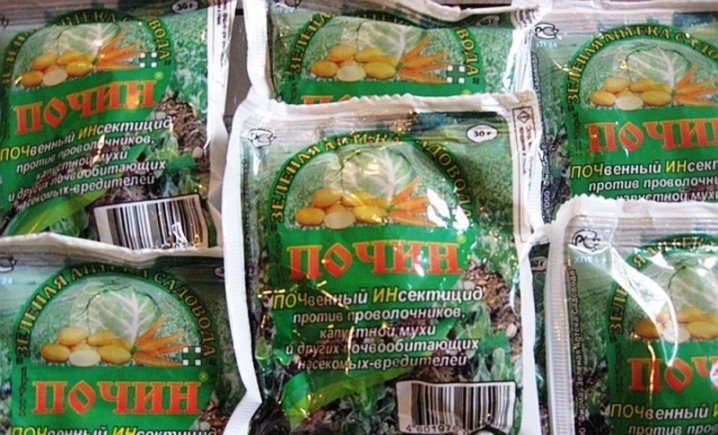
- "Decis pro". It is a potent chemical that is used to spray the affected plant. For prevention, you can treat the whole cabbage bed with it. The advantage of this product is that it is not washed off when precipitation occurs in the form of rain or hail. Decis Pro begins to work from the first seconds after application to the leaves and continues for almost a month.

- Angio. It is a broad-spectrum drug. It can be used on any plants both for treatment against parasites and for prophylaxis. It has a long-term protective effect, reaching 20 days from the moment of spraying fruit crops. Therefore, the chemical will be consumed very economically.
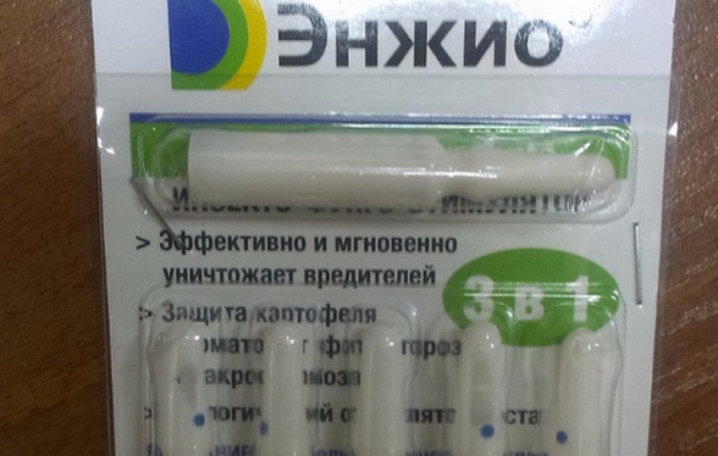
- Fitoverm. This chemical is suitable for treating not only cruciferous but also other plant species, especially flowers. The components that make up its composition quickly decompose under the influence of direct sunlight, so it will be necessary to process the cabbage several times. But this effect also has a positive characteristic - you can be sure that the agent will not remain on the cabbage leaves before eating them.
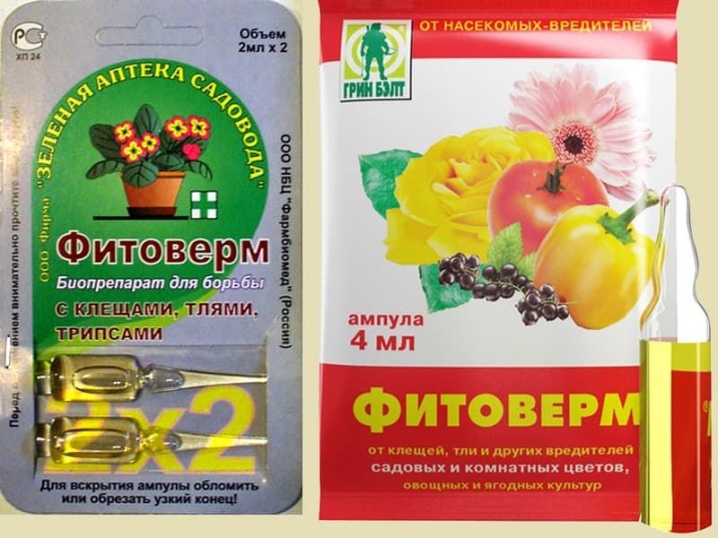
- "Bankol". This tool works quite well, moreover, it does not have a pronounced odor, it dissolves well in water and does not accumulate in the soil after processing the plant. It has gentle characteristics, so you can use "Bankol" together with other drugs. This is the only tool that does not lose its properties even when exposed to high temperature conditions. The undoubted advantage is that the drug does not harm humans, birds and animals.
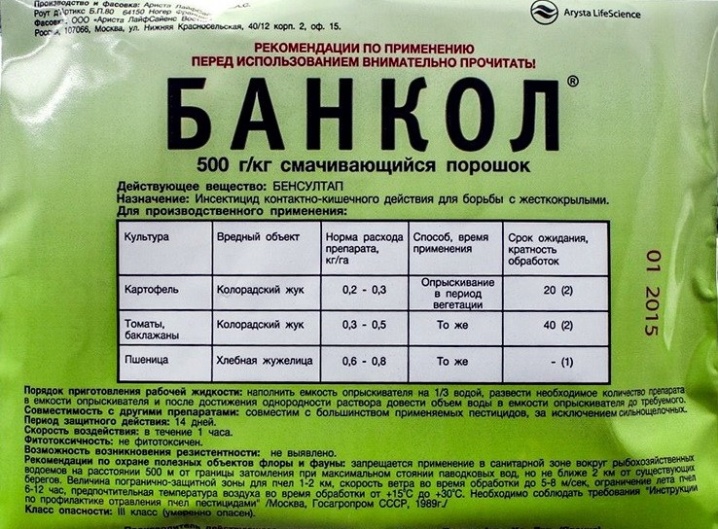
Any of the listed funds can be easily purchased at any specialized store. Before using it for its intended purpose, be sure to read the instructions for use.It is necessary to dilute with water strictly in the specified proportions so as not to harm an already weakened plant.
Chemicals can be used not only when the pests have already started, but also for preventive purposes. However, it should be remembered that such agents disinfect the soil, deprive it of the micronutrients necessary for the normal development of cabbage. Therefore, after treatment with a chemical and the elimination of pests, it is necessary to add a mixture of minerals to the soil.
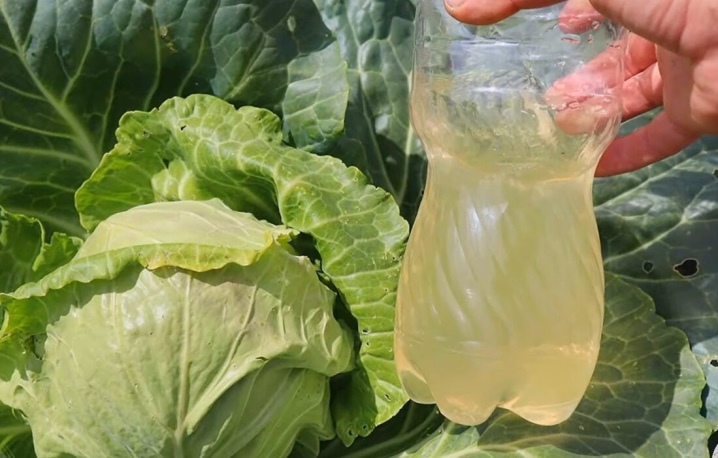
It is important to remember that after using any chemical, you should refrain from harvesting and eating for at least 20 days. This is due to the fact that residues of substances can be stored on cabbage foliage and harm the human body. The only exception is Fitoverm. After processing the crop with this tool, you can eat the fruits in a couple of three days.
Do not get carried away with the frequent use of chemicals. As a rule, they all have a lasting period of action, and after the first use the insects die and do not reappear. Excessive chemical treatment of cabbage can only aggravate the situation.
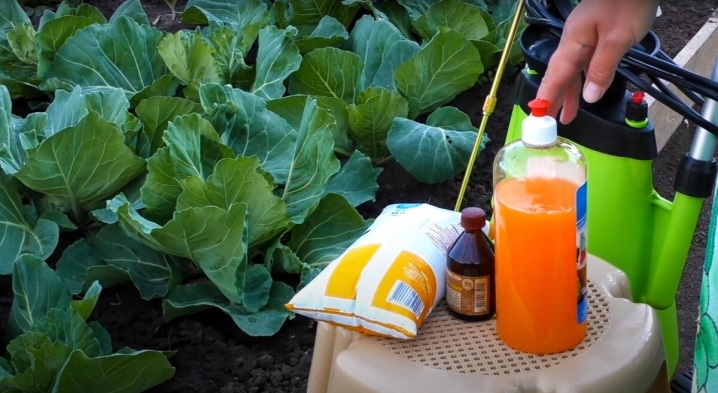
Folk remedies
In addition to chemicals to combat cabbage parasites, there are many popular recipes. They are no less proven ways to get rid of midges, because they were created by trial and error, and their effectiveness has been proven by more than one generation. The use of homemade products is a good alternative to chemicals, the use of which is not welcomed by some gardeners seeking naturalness. The following are folk recipes for drugs to combat cruciferous flea beetles.
- Ash and dust from tobacco. These two ingredients must be mixed in a ratio of 2 to 1. Then sprinkle with this mixture the soil on which the culture grows, as well as the leaves of the vegetable. So that the product sticks better to the leaves and does not roll off at the slightest breath of wind, it makes sense to moisten them a little with water.
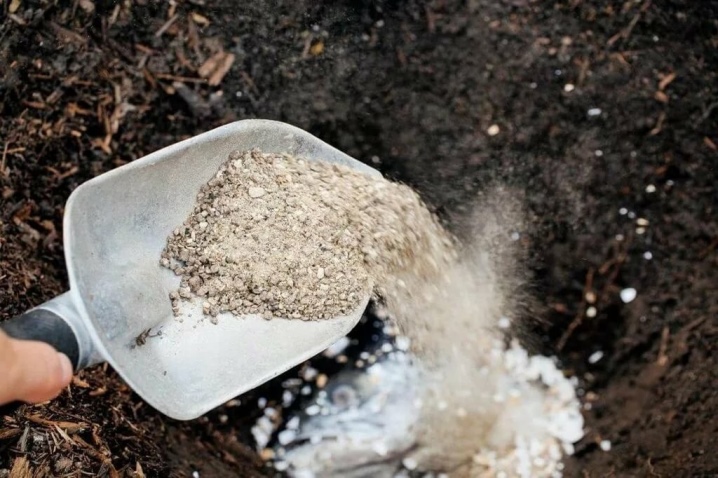
- One of the most proven and effective remedies is regular vinegar. With its help, you can forget about the problem of pests on cabbage for a long time. It is necessary to dissolve the product in 10 liters of water based on the following proportions: if 70% essence is used, then 3 tablespoons are taken, and for 9% vinegar, 1 glass is taken. It is recommended to process a bed of cabbage within five days.
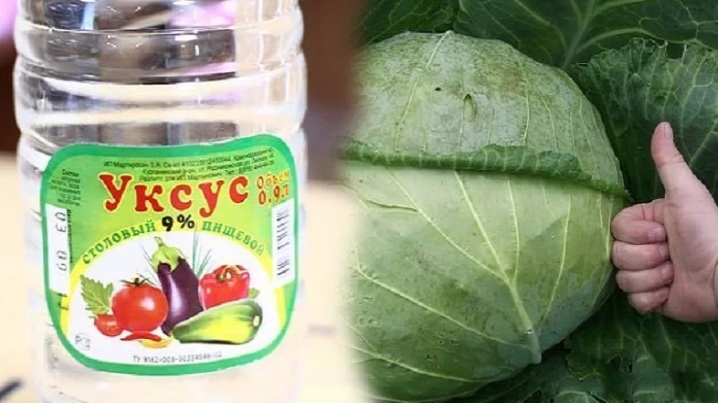
- Cruciferous midges cannot tolerate the substances contained in garlic. Therefore, it is also widely used by gardeners for processing plants. One chopped garlic head is added to a liter of water. The mixture is infused for a day, after which the cabbage itself and the soil on which it grows is sprayed.
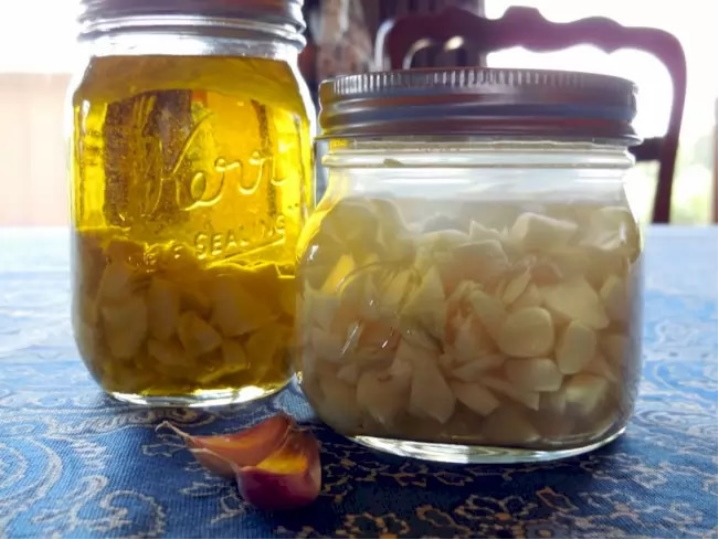
- In the fight against pests, ammonia helps well. Ammonia vapors, which are part of it, have a depressing effect on the respiratory organs of the pest, as a result of which it quickly dies. In 10 liters of water, it is enough to add only a few drops of the substance and process the cabbage leaves with the resulting mixture.
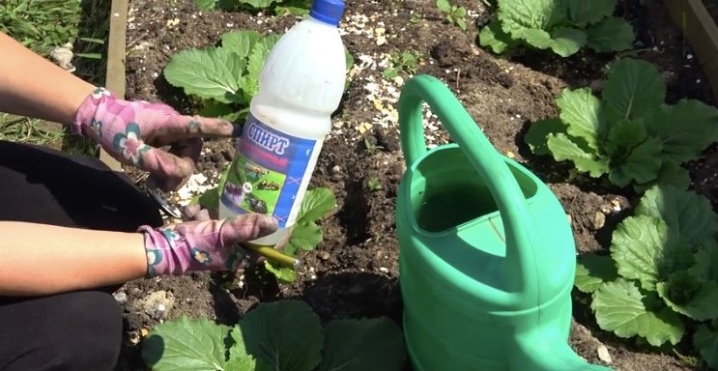
- Red pepper repels pests well. The pod is finely chopped in a blender and poured over with a liter of water. In a day, an effective folk remedy is ready for action. It must be used extremely carefully, since the fruit itself can be destroyed along with the pests.
It is better to first try the burning mixture on a couple of leaves and see if there are any traces left on them. If the tincture is too concentrated, you need to add a little more water.

- Often celandine is used in the fight against midges on cabbage. First, it must be well dried in a dry warm place, and then grind and sprinkle the powder throughout the garden.
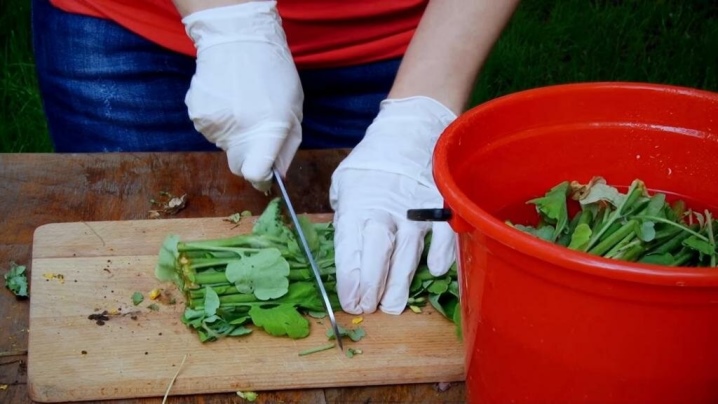
- Fir oil quickly removes intruders from cabbage. 20 drops must be dissolved in 10 liters of water, and then water the damaged plants with the resulting solution for several days.The smell of needles will scare off adult pests, and the agent itself, having penetrated the soil, will cope with the larvae.
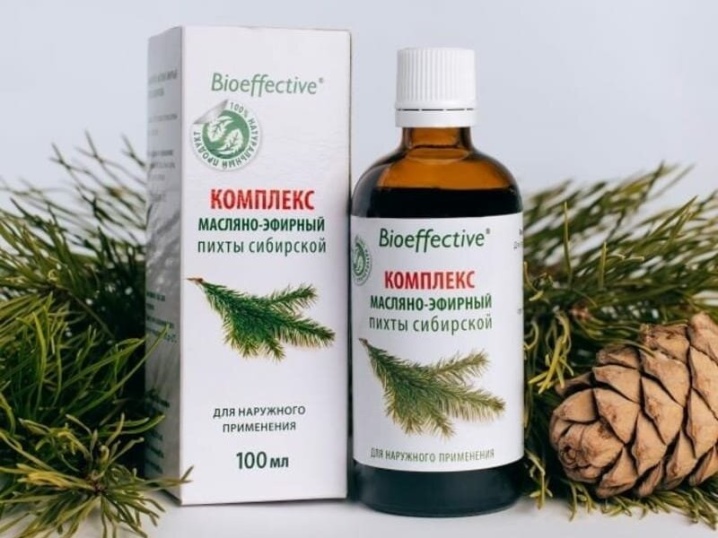
- In the fight against cabbage midges, you can use dandelion juice. To get it, you need to grind a couple or three dozen plants well and fill them with a liter of hot water. After the solution is infused, water the cabbage with it and spray its leaves every few days.
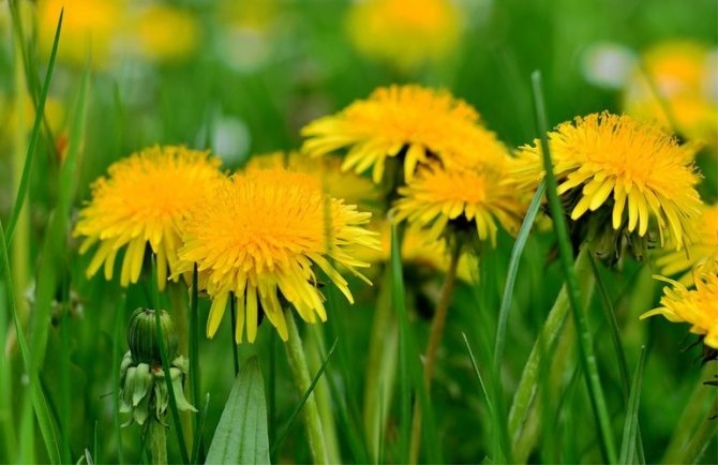
- Ordinary naphthalene is very good at eliminating midges from cabbage. 50 - 60 grams must be scattered over 10 square meters of the garden bed, and after 3 days, repeat the procedure again.
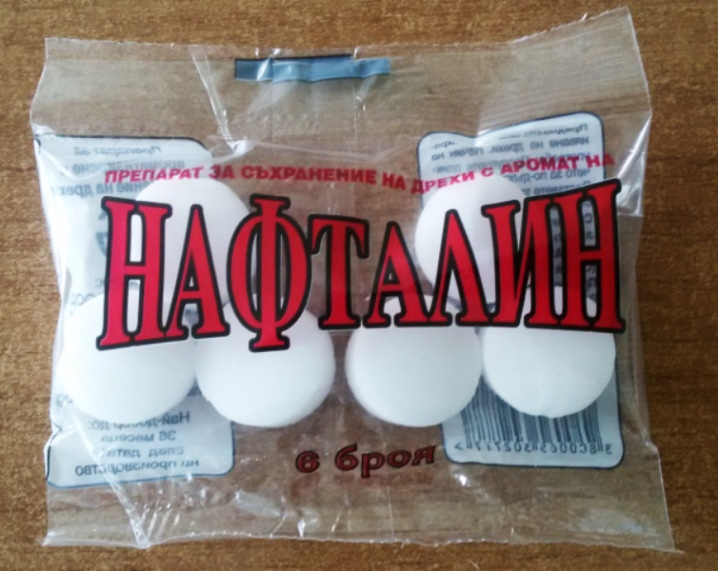
- The most affordable and economical means of dealing with cabbage flea beetles is a decoction of potato or tomato tops. 5 kilograms of this ingredient must be chopped through a meat grinder, filled with 10 liters of water and put on medium heat. It takes about half an hour to cook the product, and then leave for about a day. It is recommended to spray the cabbage with a drug filtered through cheesecloth at intervals of 5 to 6 days.

- Chicken droppings are a specific but very effective remedy in pest control. Preparation of a solution with its use gives little pleasant impressions, however, such a remedy will be absolutely natural, moreover, it accelerates the growth of the plant and the development of tubers. It should be used with water in a ratio of 1 to 100.

- Self-made glue-based traps are a good additional means of fighting gnats on cabbage. In order to make them, you need to grease pieces of plywood or plastic with any fast-acting glue, and then spread them out under the plants. Insects that have fallen from the leaves, getting stuck in the glue, will not be able to climb the leaves again. You can place such traps after the cabbage has been treated with a chemical or folk remedy.
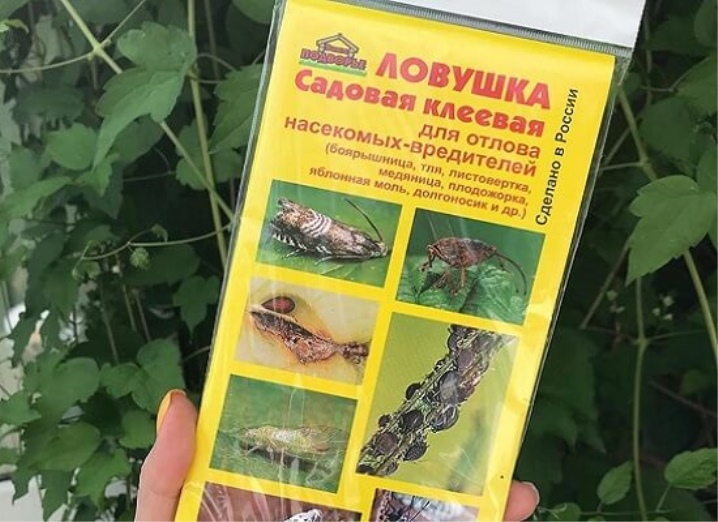
In addition to these, there are many other, no less effective folk recipes for midges on cabbage. Surely any experienced gardener in the arsenal has independently developed mixtures and tinctures that help to effectively cope with the problem.

Prevention measures
Even if pests are absent on cabbage now, this does not mean that they will not appear in the future. To protect the crop from the attack of parasites, you need to know and follow the following preventive measures.
- Regular watering. The appearance of pests on garden plants directly depends on the moisture content of the soil. Both overdrying and overflow of the earth are not encouraged.
- Early planting of cabbage seedlings in open ground. The ideal time is May - early June. From sudden frosts that may occur during this period, the plant will be protected by agrospan - a special covering material that is used by gardeners when planting plants in the early stages of their development.
- Cabbage loves potassium and phosphorus supplements, which can be purchased at any gardening store. Its use makes the plant stronger and more capable of resisting diseases caused by pests.
- Timely removal of weeds from the garden.
- It makes sense to set up a bed of garlic next to the cabbage plantation. Parasites do not tolerate its smell and will fly around it. This will help to avoid the appearance of not only cabbage midges in the garden, but also other types of pests without unnecessary chemical treatment. Other herbs and vegetables have a similar effect, such as dill, caraway seeds, potatoes, tomatoes, etc.
- It will be nice to periodically spray the cabbage tubers with a weak solution of 7% vinegar. It is important here not to overdo it and not harm the plant.
- After the crop is harvested, it is recommended to dig up the soil. This will help eradicate the larvae that prefer to winter in the upper layers of the soil. It is also necessary to remove or burn cut grass or loose leaves, not allowing it to be found in the garden area. Such places are also a favorite hiding place for laying cruciferous flea larvae.
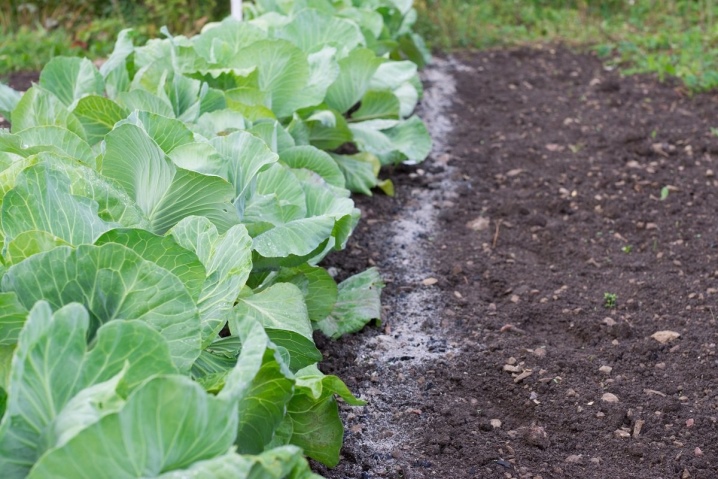
No one is immune from the negative impact of parasites on the future harvest. However, competent preventive actions will help significantly reduce the risk of harmful insects on cabbage leaves. If this has not been avoided, do not give up, because at present there are a large number of tools, the use of which will help to quickly solve the problem and forget about it for a long time.













Accessible and understandable. Thanks.
The comment was sent successfully.